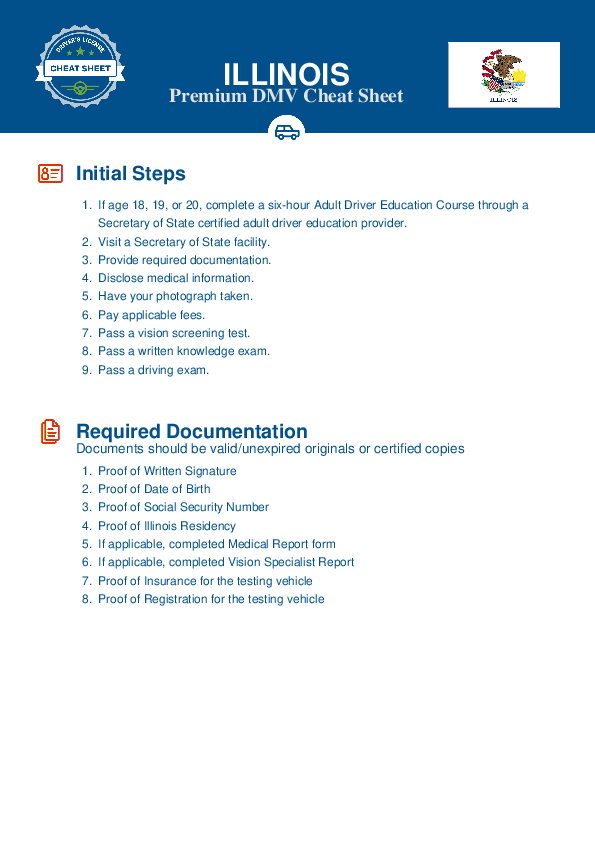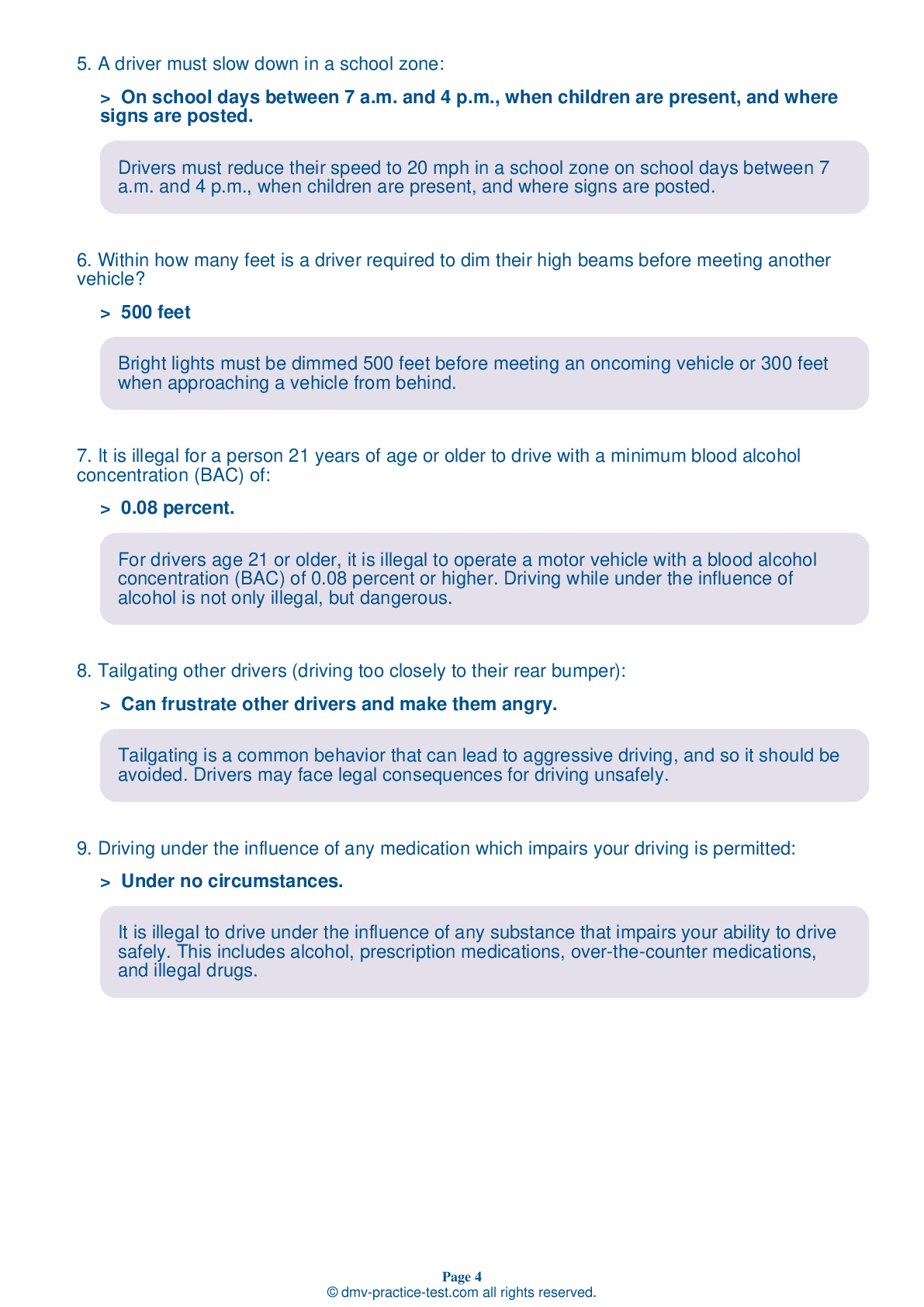FREE Illinois DMV Practice Test #7
For January 2025, this set of Illinois DMV practise tests has been updated. It includes questions based on the most important traffic signs and rules for 2025 from the Illinois Driver Handbook. To study for the DMV driving permit test and driver's licence exam, use actual questions that are very similar (often identical!) to the DMV driving permit test and driver's licence exam.
Each question on the practise exam has a tip and explanation to help you recall the ideas. Questions about traffic rules, traffic signs, and driving statutes, as well as information from the Driver Handbook, will be included in the written portion of the official DMV test.
You must properly answer 38 of the 35 questions to receive a passing mark. To help you prepare for your Illinois instruction permit or driver's licence, take our DMV practise test.
The DMV exam is offered in a variety of languages.
Using any form of testing help will result in an automatic fail, and the DMV may take further action against your driver's licence, so avoid it.
1 . When you see this road sign, you should:
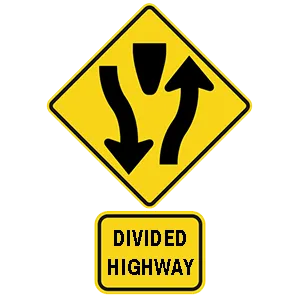
Warning signs are usually yellow with black markings. This sign indicates that a divided highway is beginning and cars should keep to the right.
2 . A steady red arrow displayed on a traffic light means:
If a traffic signal is displaying a steady red arrow, traffic in the indicated lane may not proceed in the direction shown by the arrow. Drivers must come to a full stop and wait for a green signal to proceed.
3 . If there is no crosswalk and you see a pedestrian crossing your lane, you should:
Drivers must always yield the right-of-way to pedestrians in the roadway, even if there is not a marked crosswalk.
4 . This road sign means:
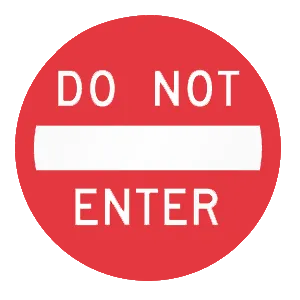
This sign marks a one-way road, entrance, or exit. If you are facing this sign, traffic is coming toward you. Turn around if you are driving toward this sign.
5 . When a school bus is stopped ahead on your side of the road with its red lights flashing, you must:
The flashing overhead lights and stop arm on a school bus will be activated when the bus is stopped to load or unload students. If approaching a bus using these signals, you may not proceed until the red lights have stopped flashing and the stop arm has been retracted. Never pass a school bus that is dropping off or picking up students.
6 . Your car must have a horn that can be heard from a distance of 200 feet.
All vehicles must have a horn that can be heard from 200 feet away. Sirens, whistles, and bells are allowed only on authorized emergency vehicles.
7 . If a motorist sees pedestrians in an upcoming crosswalk, what should the motorist do?
A driver must yield the right-of-way to a pedestrian within a crosswalk. The driver should wait until the intersection is clear to proceed.
8 . This road sign means:
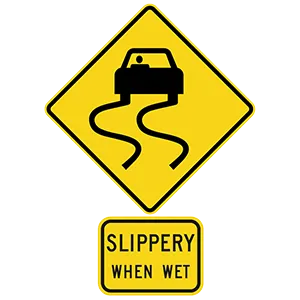
Warning signs are usually yellow with black markings. This sign warns drivers that the roadway will be slippery when wet and they should reduce their speed accordingly.
9 . After making a proper stop and yielding to traffic or pedestrians within the intersection, it is permissible for drivers on a one-way street to turn left at a red light onto another one-way street that moves traffic to the left.
It is permissible to make a left turn at a red light when turning from a one-way street onto another one-way street that has traffic moving to the left. Before turning, you must come to a complete stop and yield the right-of-way to oncoming traffic and pedestrians.
10 . Slow vehicles should use the left-hand lane, except when passing or making a left turn.
Slow vehicles must use the right-hand lane, except when passing or making a left turn.
11 . This sign means:

Warning signs are usually yellow with black markings. They alert you to conditions that are immediately ahead. This sign warns that the roadway is slippery when wet.
12 . This sign means:

This sign prohibits right turns. You cannot make a right turn at an intersection where this sign is posted.
Need Car Insurance? No problem!
Compare the best rates in Illinois and find a personalized policy that meets your needs.
1. Are You Currently insured ?
2. Married ?
3. Do you own your Home?
4. Do you have more than 1 car ?
5. Have you or a Family Member Honorably Served in U.S. Military ?
6. Your Name
7. Age
8. Zip code
IMPORTANT REMINDER:Auto Insurance is Mandatory to drive in Illinois. Get covered before you hit the road to avoid any fines.
Ranked by best match
